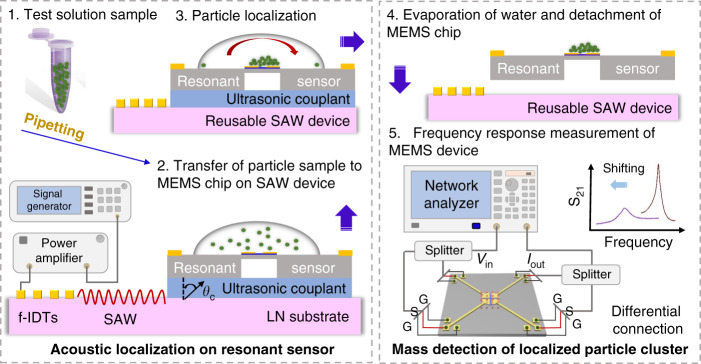Fig. 1. Methodology and workflow for acoustofluidic particle localization over a TPoS resonant sensor followed by mass detection of the localized particle cluster.
(1) A water sample containing micro-objects (e.g., seawater or an insoluble chemical solution) is to be collected in tubes. (2) The MEMS chip is mounted on a SAW device with an ultrasonic couplant at the interface. A small test sample (μL) containing the MPs is then pipetted onto the MEMS chip. (3) SAWs generated from the LiNbO3 (LN) piezoelectric substrate are transmitted into the MEMS chip (by diffraction at the Rayleigh angle θc) to drive droplet microcentrifugation, resulting in the localization of particles on the resonant sensor. (4) The droplet is left to evaporate within several seconds, leaving behind the micro-objects on the TPoS resonant sensor. The MEMS chip can be detached from the LN substrate without damaging either device. (5) This TPoS MEMS device was probed using a fully differential configuration with electrical transmission (S21) measured using a network analyzer and a pair of radiofrequency (RF) power splitters. The mass of localized micro-objects was calibrated to the measured shift in the resonant frequency before and after adding the localized particles.

